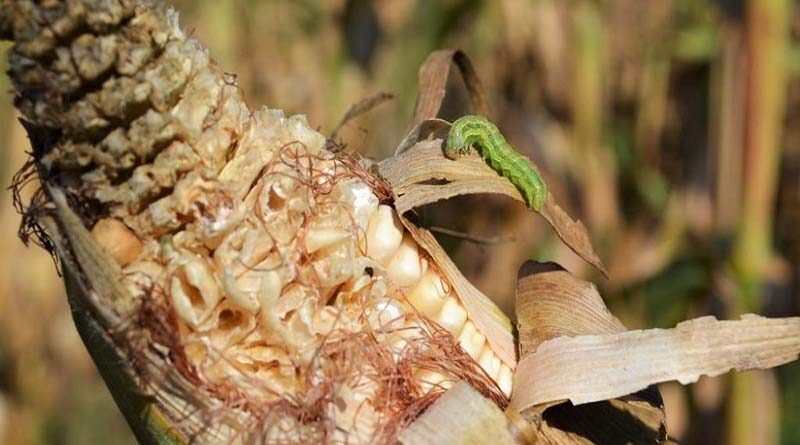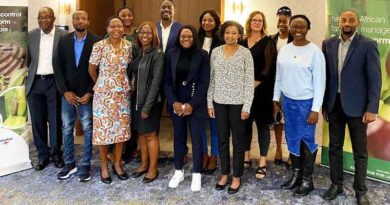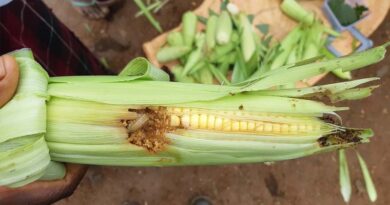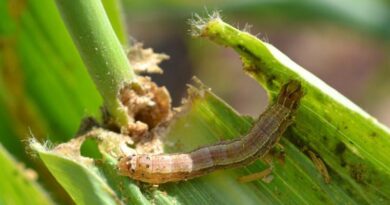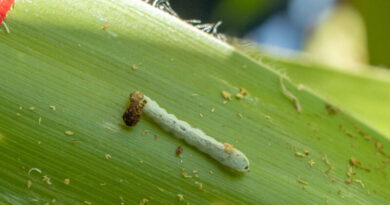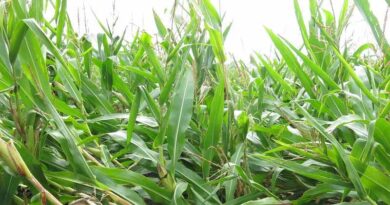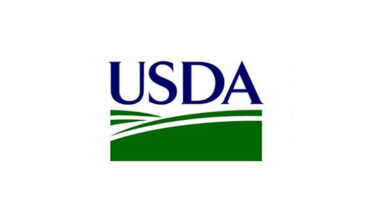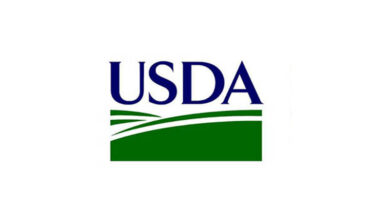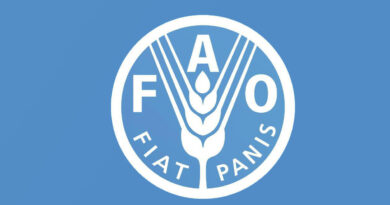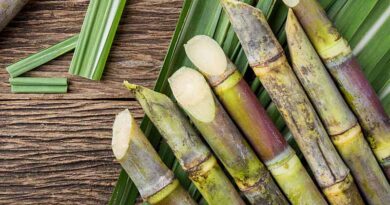New research reveals factors influencing the parasitoids that help to control invasive fall armyworm
11 February 2021, Africa: Scientists from CABI, Wageningen University and the Zambia Agriculture Research Institute (ZARI), with lead author Léna Durocher-Granger, recently published a paper in the Journal of Pest Science considering factors influencing the occurrence of fall armyworm parasitoids in Zambia. Their discoveries bring positive news to conservation biological control programmes, as the findings point to the potential of increasing local populations of natural enemies of fall armyworm that can be developed into safe and practical control methods for smallholder farmers to use on their crops.
Invasive alien species – species that arrive in a new environment with no local, natural enemies to control their spread – can damage crops and have environmental, economic and social impacts on smallholder farmers in low- and medium-income countries (LMICs), disproportionally threatening their livelihoods and food security.
Fall armyworm, an invasive crop pest native to the Americas, arrived in Africa in 2016 and, since then, has caused considerable losses to maize and other crops across the continent, adversely affecting smallholders. An evidence note published by CABI revealed that maize farmers had average losses of 26.6% in Ghana and 35% in Zambia due to the pest.
This is why it is so important to understand how fall armyworm can be managed. In order to do this, a group of researchers led by CABI conducted a survey to identify local parasitoids that attack fall armyworm in Zambia. They collected fall armyworm eggs and larvae during a maize crop cycle in the rainy season of 2018–2019 at four locations in the Lusaka and Central provinces of Zambia on a weekly basis in order to look for parasitoids.
A total of 4,373 larvae and 162 egg masses were collected. For each location and date of collection, crop stage, the number of plants checked, and amount of damage were recorded in order to analyse which factors best explained the occurrence of a natural enemy species on maize. They found that, overall, parasitism rates from local natural enemies at each location varied between 8.45% and 33.11%.
They identified 12 different egg-larval, larval and larval-pupal parasitoid species and analysed the factors influencing the occurrence of parasitoids. The research gave interesting results and showed how four factors strongly influence the occurrence of parasitoid species:
• location,
• maize growth stage,
• pest density, and
• larval stage.
An unexpected finding among their results was the variation in parasitoid occurrence through the maize growth cycle. During the last maize stages recorded (11-12 leaves and tasselling and silking) both occurrence and abundance of parasitoids recorded from the fall armyworm larvae decrease.
The research shows the importance of understanding factors of space and time in relation to the establishment of local natural enemies. The research is particularly relevant for conservation biological control and the development of timely management practices against a specific pest stage in order to enhance parasitoid populations and their mobility across crop and non-crop habitats. This is important because locally developed biocontrol programmes are needed for safe management of pests in Africa.
Further studies are needed to determine the exact species of parasitoids through, for example, molecular and morphological identification, but the research is a solid step forward in the fight against fall armyworm, a dangerous pest threatening the future of Africa’s farmers.
Also Read: Corteva Agriscience Selects Dadelos Agrosolutions for Global Commercialization of Biostimulants

